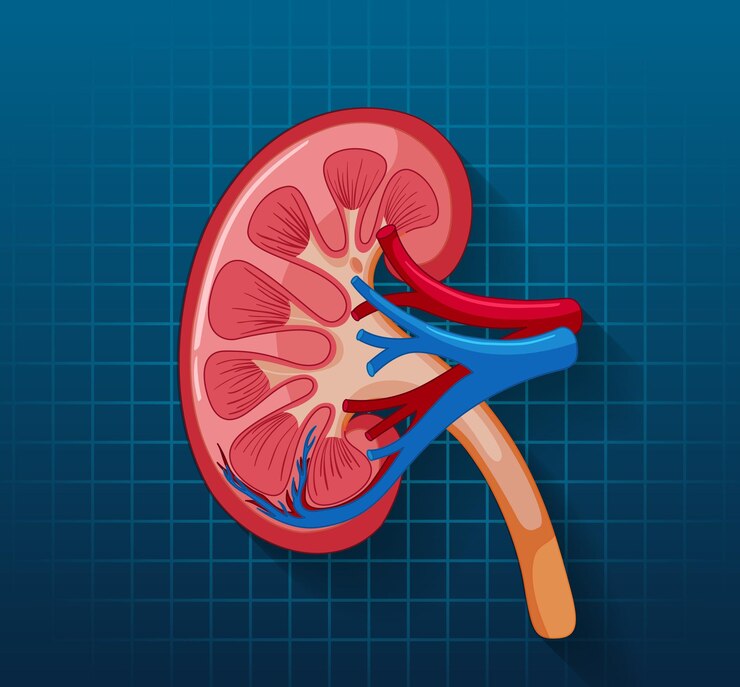The gallbladder is a small but vital organ in the human body. It plays a crucial role in the digestive system by storing and concentrating bile, a digestive fluid produced by the liver. The size and weight of the gallbladder can vary among individuals, and understanding these variations is important for assessing overall health and diagnosing gallbladder-related conditions. In this article, we will delve into the size and weight of the gallbladder, the factors that influence these measurements, and the significance of gallbladder size and weight in health and disease.
Understanding the Anatomy of the Gallbladder
Before we explore the size and weight of the gallbladder, let’s first understand its location and function. The gallbladder is a small, pear-shaped organ situated beneath the liver in the upper-right quadrant of the abdomen. It typically measures about 3 to 4 inches (7.6 to 10.2 cm) in length and 1 inch (2.5 cm) in width. The gallbladder can hold approximately 30 to 50 milliliters (mL) of bile when it is full.
Variability in Gallbladder Size
The size of the gallbladder can vary from person to person. It is influenced by factors such as age, gender, and individual anatomy. Here are some key points regarding the variability in gallbladder size:
- Age: Gallbladder size tends to decrease with age. In infants, the gallbladder is relatively larger compared to adults. Over time, it may undergo atrophy and reduce in size.
- Gender: Studies have shown that women may have slightly smaller gallbladders than men. This size difference can be attributed to hormonal factors.
- Disease and Conditions: Gallbladder size can change due to various medical conditions. For example, gallstones, which are solid particles that can form in the gallbladder, may impact its size and function.
- Filling and Emptying: The gallbladder’s size varies depending on whether it is full or empty. After a meal, it fills with bile and expands, while it contracts and becomes smaller as it empties bile into the small intestine to aid in digestion.
The Weight of the Gallbladder
The weight of a healthy, adult gallbladder is typically between 30 to 50 grams. As with its size, gallbladder weight can also vary among individuals. Factors such as the presence of gallstones, inflammation, or other diseases can affect the weight of the gallbladder. A gallbladder containing gallstones may be heavier due to the presence of these solid particles.
Significance of Gallbladder Size and Weight
The size and weight of the gallbladder play a role in diagnosing and assessing various gallbladder-related conditions. Here’s how:
- Gallstone Diagnosis: Imaging techniques, such as ultrasound, are commonly used to assess gallbladder size and identify the presence of gallstones. Larger gallstones may obstruct the gallbladder or its ducts, causing symptoms and necessitating medical intervention.
- Gallbladder Disease: Conditions like cholecystitis, which is inflammation of the gallbladder, can lead to changes in size and weight. An inflamed gallbladder may be larger and heavier than a healthy one.
- Gallbladder Removal: In cases where gallbladder disease is severe or recurrent, surgical removal of the gallbladder (cholecystectomy) may be recommended. The size and weight of the gallbladder may influence the complexity of the surgery.
- Digestive Function: Although gallbladder size and weight are not direct indicators of digestive function, their variations can impact how effectively the gallbladder stores and releases bile to aid in digestion.
Common Gallbladder-Related Conditions
- Gallstones: These are solid particles that can form in the gallbladder. They may vary in size and can lead to symptoms like abdominal pain, nausea, and vomiting.
- Cholecystitis: Inflammation of the gallbladder can result from gallstones or other factors. It may lead to gallbladder swelling and increased weight.
- Gallbladder Polyps: These are growths on the gallbladder wall. Their size and weight can vary, and larger polyps may raise concerns about cancer.
- Chronic Acalculous Gallbladder Disease: The condition occurs when the natural movements that facilitate the emptying of the organ do not function properly.
- Gangrene: When cholecystitis is not treated properly, it can cause the gallbladder tissue to die. It is a common complication that can be observed in older individuals, especially those who wait to get the condition treated due to diabetes. Additionally, this gangrene can result in a tear that may cause the organ to burst.
Conclusion
This was all on the size and weight of the organ. The gallbladder, although small, plays a significant role in the digestive system. Its size and weight can vary among individuals due to factors like age, gender, and the presence of gallbladder-related conditions. Understanding the size and weight of the gallbladder is valuable for diagnosing and assessing gallbladder diseases and guiding treatment decisions.
If you experience symptoms related to your gallbladder, such as abdominal pain, it is important to seek medical evaluation and guidance. A healthcare professional can determine the appropriate diagnostic tests and treatment options based on your specific condition.







